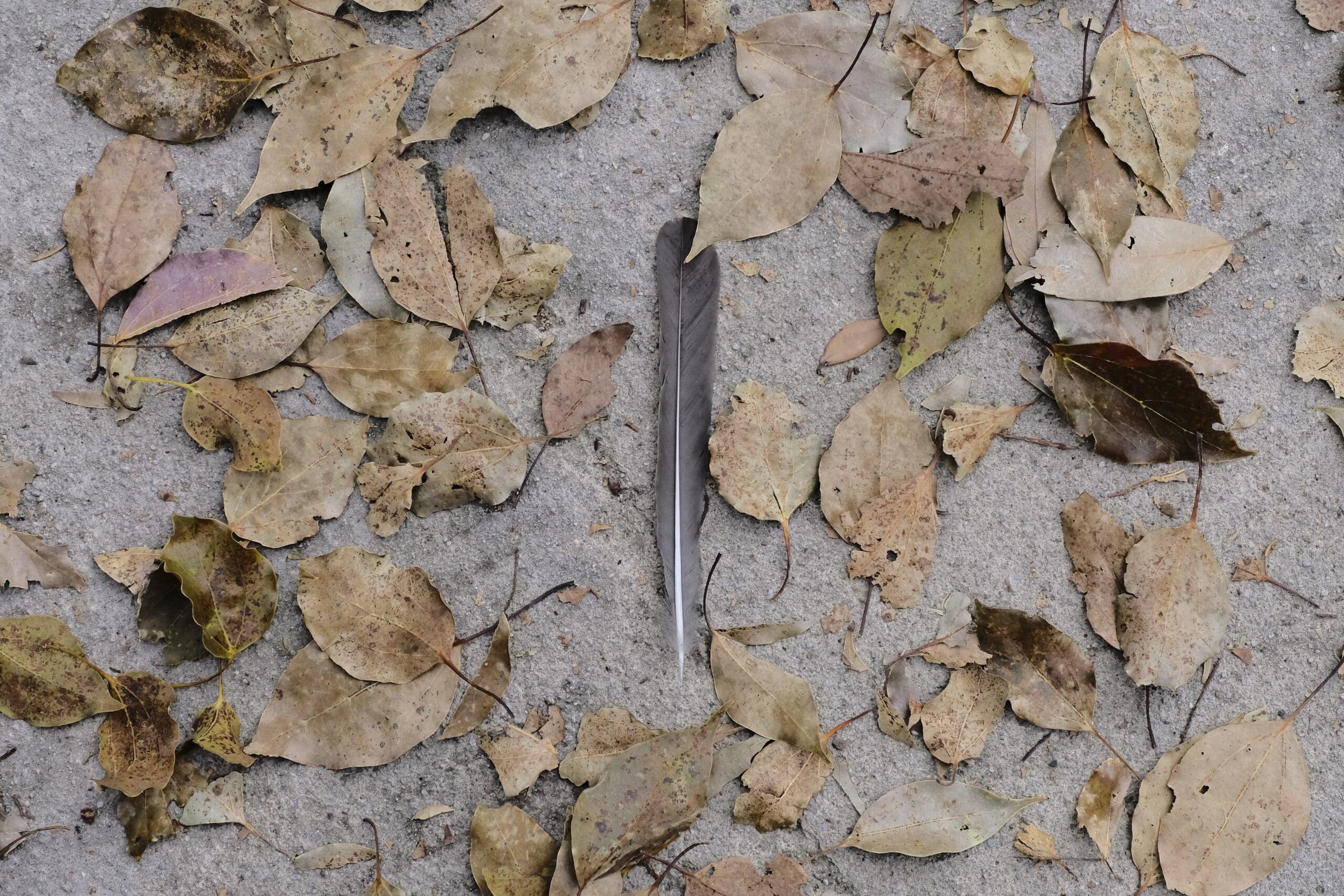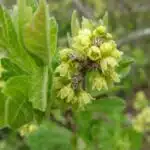The scented-leaved geranium is a beloved garden favorite. Its delicate flowers and delightful aroma make it an ideal addition to any garden. But beyond being visually appealing, they are also easy to care for and maintain, making them a great choice for beginner gardeners or those who don’t have a lot of time to dedicate to gardening. In this article, we’ll look at how to properly grow and care for scented-leaved geraniums so that you can add them to your own garden with ease.
For the novice gardener, learning how to properly tend and cultivate these plants can be a bit daunting. But don’t let that stop you from getting the most out of your scented-leaved geraniums! With the right knowledge, you can create a vibrant and fragrant landscape easily. From soil selection to proper pruning techniques, we’ll cover all the necessary steps in detail so that even the newest gardener can enjoy growing scented geraniums with confidence.
In addition, cultivating these plants doesn’t need to be expensive or complicated. With just a few supplies and some simple techniques you can create beautiful gardenscapes filled with lush green foliage and captivating aromas that will transport you back in time as soon as you step outside! So if you want to learn more about how to grow and care for your scented-leaved geraniums then read on – we’ve got all the information you need here!
What Are Scented-Leaved Geraniums?
Scented-leaved geraniums are a type of flowering plant, belonging to the genus Pelargonium. They’re commonly known for their fragrant leaves and flowers, which can be found in a wide range of colors and scents. The plants have been around since the mid-1700s, when they were first introduced to Europe from South Africa.
They require well-drained, fertile soil with plenty of sunlight to thrive. It’s important to water regularly and deadhead any spent blooms to encourage new growth. Regular pruning is also essential; removing faded stems helps promote lush foliage and healthy blooms.
When it comes to selecting the right variety of scented geranium, there are several factors to consider. Look for ones that are hardy enough for your climate zone; some varieties may need extra protection during cold winters or hot summers. Additionally, think about the scent you want; different varieties will offer different smells ranging from citrus notes to sweet floral aromas.
Choosing The Right Variety Of Scented Geranium
When it comes to selecting the right variety of scented geranium, there’s a world of options. It’s like taking a stroll in an aromatic garden, with each leafy path leading to different species of these delightful plants. We’ll walk you through the basics of choosing the perfect variety for your needs.
First and foremost, consider scent when selecting a scented geranium. While some varieties have a more delicate aroma than others, all are sure to add an enchanting note to any garden or home space. For stronger fragrances, look for lemon-scented geraniums or rose-scented types. If you’re after something with a milder fragrance, try out lavender-scented or nutmeg-scented varieties.
Next, think about size and shape when picking out the right type of scented geranium for your garden. Some varieties grow tall and upright while others remain compact and low-growing – so take note of their mature heights before purchasing them. Additionally, many varieties come in several shapes – from large ruffled leaves to small fern-like foliage – so pick one that fits well into your overall design aesthetic!
Finally, be mindful of blooming times when deciding on which scented geranium to bring home. Depending on the cultivar chosen, blooms can range from bright yellow in springtime to deep red during autumn months – adding a delightful splash of colour wherever placed!
Planting And Positioning Scented Geraniums
When it comes to planting and positioning scented geraniums, the mantra is ‘location, location, location’. When selecting a spot in your garden or balcony, make sure it’s in a sunny area with plenty of airflow and protection from the elements. It’s also important to ensure that the soil is well-draining but still retains moisture, as these plants are sensitive to soggy roots.
As a botany specialist and gardening enthusiast, I highly recommend planting your scented geranium in a container – this way you can control their environment more easily. When placing them in the pot, be sure to fill it with pre-fertilized soil (or add fertilizer) and plant at least two inches below the rim of the container. Then set it up in an area that receives six hours of sunlight daily for optimal growth.
It’s also essential to protect your scented geranium from strong winds which can dry out its leaves quickly. Place them away from fan vents or air conditioning units as this will reduce the chance of leaf burn caused by excessive flow of air. With proper selection and placement of your scented geraniums in your garden or balcony, you will enjoy their fragrant blooms for years to come!
Watering And Feeding Scented Geraniums
Watering and feeding scented geraniums is an art. It can be tricky to get the balance right and many novice gardeners get it wrong. To ensure success, here are three easy steps that even a beginner gardener can follow:
Watering: Scented geraniums should be watered regularly but not over-watered as they are prone to root rot. A light sprinkle once or twice a week is usually sufficient, but if the soil feels dry to the touch then increase watering accordingly.
Feeding: A balanced liquid fertilizer should be applied every two weeks during their growing season, from April to October. During winter, feeding should be stopped for at least six weeks before starting again in springtime.
Mulching: Add a layer of mulch around the base of the plants to help retain moisture and protect them against cold weather during winter months when temperatures drop below freezing point. This will also help prevent weeds from encroaching on your precious plants.
By following these simple steps, you will soon have healthy scented geraniums that will bring plenty of fragrance and beauty into your garden all year round!
Pruning Scented Geraniums
Pruning scented geraniums is an essential part of their maintenance and growth. Akin to trimming a bush or hedge, it helps keep the plant healthy and attractive. Like any other pruning job, this one needs to be done with care and precision. As the saying goes – a good prune makes all the difference!
Here are five tips for pruning your scented geraniums: •tStart by removing any dead, diseased or damaged stems. •tCut away any weak or straggly shoots that are not in line with the desired shape of the plant. •tPrune away any flower buds that have already opened up, as this will help promote further blooms throughout the season. •tTrim back overgrown stems to encourage fuller growth in areas that may be sparse. •tUse sharp secateurs or scissors when cutting to get clean cuts and avoid damaging the stem tissue.
For expert gardeners, pruning scented geraniums can be quite rewarding as it allows them to customize their plants according to their own preferences. Not only does it help maintain a neat appearance, but it can also prevent overcrowding and encourage better air circulation around the plant which is beneficial for its health overall. With careful attention to detail and patience, you can easily create beautiful floral displays with your scented geraniums!
Common Problems Of Scented Geraniums
Pests and diseases can be an issue with scented geraniums, particularly when grown outdoors. To help protect your plants, it is important to practice good plant hygiene by removing any dead or dying leaves and flowers as soon as possible. Here are some of the most common problems you may encounter while growing scented geraniums:
• Aphids: These tiny insects suck the sap from leaves and stems, leaving behind a sticky residue. You can control them by spraying your plants with an insecticidal soap or neem oil solution.
• Powdery mildew: This fungal disease appears as a white powdery substance on the leaves of your plant. To prevent it from spreading, avoid overhead watering and make sure there is good air circulation around the plant. If you do notice signs of infection, remove the affected areas immediately and treat with a fungicide such as potassium bicarbonate or sulfur.
• Root rot: This fungal disease can occur if your plants are overwatered or planted in poorly drained soil. To prevent it from occurring, ensure that your soil drains well and don’t water more than necessary. If you do notice any symptoms of root rot, remove the affected areas immediately and treat with a fungicide such as copper sulfate or hydrogen peroxide solution.
If you take these steps to protect your scented geraniums against pests and diseases, they should remain healthy and vigorous for many years to come. With proper care, these delightful plants will reward you with beautiful foliage and fragrant blooms season after season. Now that we’ve discussed some common problems encountered while growing scented geraniums, let’s move on to discussing how to propagate these lovely plants!
Propagating Scented Geraniums
Propagating scented geraniums is like a puzzle; it requires the right combination of pieces and effort to get the desired result. As a Specialist in botany and gardening, I can guide you through the process.
The most common way to propagate scented geraniums is by cuttings. Cut 3- to 4-inch pieces from stems just below a leaf node and remove any remaining leaves or flowers on the cutting. Dip the end of the cutting into rooting hormone powder and then place it in potting soil that’s been amended with compost. Water thoroughly and keep moist until it has rooted, which usually takes 2-4 weeks.
You can also propagate with division if your existing plants are too large or rootbound. Carefully dig up the plant, shake off excess soil, then divide it into two or more parts using a sharp spade or knife. Replant each part in its own pot with fresh soil and water thoroughly after planting.
Propagating scented geraniums is an easy way to increase your collection of these fragrant plants for your garden or for gifting others. It’s time to move onto winter care for scented geraniums so they thrive year round!
Winter Care For Scented Geraniums
Winter care for scented geraniums is a critical aspect of their cultivation, as the right steps help ensure that they come out of their dormant period in good condition and ready to bloom. Like a well-orchestrated dance, the careful management of temperature, light, and water can be the difference between success and failure when it comes to winterizing your scented geraniums. For botanists and gardeners alike, understanding how to properly care for these fragrant plants in the cold season is key to keeping them healthy and flourishing year round.
As temperatures begin to drop, it’s important to gradually reduce watering frequency for scented geraniums. While some species are more drought-tolerant than others, all varieties benefit from being slightly drier over winter months. In addition to reducing water levels, consider sheltering your plants from harsh weather by moving them indoors into a bright yet cool area with adequate ventilation. Make sure not to place them near any active heating sources because this could cause unnecessary stress or even death of the plant due to overheating.
Finally, if given enough sunlight and protection from strong winds or drafts during winter months, scented geraniums should remain healthy until warmer days arrive. With proper care and attention throughout the cold season you can rest assured that your beloved plants will be ready in full bloom when spring arrives!
Pests And Diseases Of Scented Geraniums
Pests and diseases can cause significant damage to scented geraniums, especially if they are left untreated. Therefore, it is important to monitor your plants for any signs of infection or infestation. Common pests such as aphids, mealybugs, slugs, and spider mites can all attack scented geraniums and should be controlled immediately with an appropriate insecticide. Additionally, fungal diseases such as powdery mildew and root rot can also affect scented geraniums if the plants become too wet or overcrowded. It is important to provide good air circulation to prevent fungal growth and treat affected plants with a fungicide.
In addition to controlling pests and diseases, it is important to properly care for your scented geraniums in order to keep them healthy and avoid any potential problems. This includes providing adequate water, sunlight, soil nutrients, mulch for insulation during cold months, pruning for better air circulation, and avoiding over-fertilization. With the proper maintenance and care, your scented geraniums will thrive even in difficult growing conditions.
By following these steps and being vigilant about pest control and disease prevention measures you can ensure that your precious scented geraniums remain healthy throughout the year. Next up we’ll look at how best to harvest their fragrant leaves!
Harvesting Scented Geranium Leaves
Harvesting scented geranium leaves is an important part of caring for these plants. It can help keep them healthy by removing damaged or diseased leaves, as well as promote new growth. Here are the steps to harvesting your scented geraniums:
• Prepare: o Gather supplies such as gloves and scissors o Ensure you have a container to put the harvested leaves in o Select only healthy, undamaged leaves from the plant
• Harvest: o Cut the leaf off at its stem, taking care not to damage other parts of the plant o Carefully remove any thorns on the leaf before putting it in your container
• Store: o Place the harvested leaves in a cool, dark place o Keep them away from direct sunlight
Harvesting scented geraniums regularly will help keep them healthy and promote new growth. It’s important to remember to harvest only healthy leaves, and store them properly after cutting. This way you can enjoy their beautiful scent without worrying about disease or pests.
Uses Of Scented Geraniums
It is widely believed that scented geraniums have a range of uses beyond just providing pleasant aromas. This theory is especially true for gardeners and botanists who are looking to make the most out of their fragrant plants. In this article, I’m going to take a closer look at the many different uses of scented geraniums, from harvesting leaves for culinary purposes to using them as companion plants in gardens.
Harvesting scented geranium leaves is one of the most common uses for these plants. The leaves can be used fresh or dried in cooking and baking recipes, such as teas, syrups, salads, and pies. The flavor of each variety varies between sweet and spicy depending on the type you choose. They also contain essential oils which can be extracted with steam distillation to make essential oil products like incense sticks or aromatic candles.
Scented geraniums can also be used as companion plants in gardens. By planting certain varieties near each other, they are able to repel pests away from vegetables or flowers. For example planting citronella geraniums near tomatoes can help keep aphids away while rose-scented geraniums can help deter cabbage moths from cabbages and kale. Additionally, some types of scented geraniums attract beneficial insects like bees and butterflies which can improve pollination rates in the garden.
The range of uses for scented geraniums demonstrates their versatility both indoors and outdoors in gardens around the world. From adding delicious flavors to dishes to protecting vegetables from pests, these fragrant plants offer plenty of ways to bring beauty into any home or garden setting.
Companion Planting For Scented Geraniums
Despite the many benefits of growing and caring for scented-leaved geraniums, some may think that companion planting is an unnecessary step. However, companion planting can help to create a more diverse and resilient environment in your garden that increases the health and productivity of your plants. It also helps to discourage pests, reduce weeds, and attract beneficial insects.
In terms of companion planting for scented geraniums, it’s best to plant them near other herbs or vegetables with similar sun and water requirements. Some good companions for scented geraniums include thyme, oregano, dill, basil, squash, beans, carrots, onions, tomatoes and peppers. As an added bonus, many of these plants will also benefit from the fragrant leaves of the scented geraniums.
When pairing scented geraniums with other plants in your garden bed or container garden, be sure to leave enough room for both so they don’t compete for resources like light or water. It’s also important to pay attention to which plants require more frequent pruning than others as this could cause overcrowding if left unchecked. With a bit of careful planning and maintenance you can create a beautiful garden packed with fragrant foliage! Moving on from here we’ll look at how to make use of those fragrant leaves by making scented geranium oil.
How To Make Scented Geranium Oil
Have you ever wanted to make your own scented geranium oil? This simple yet elegant process is a great way to make use of these delightful plants. In this article, we will explore how to make scented geranium oil from the leaves of these fragrant plants.
The first step in making scented geranium oil is to harvest the leaves. To do this, gently remove a few of the larger leaves from the plant, taking care not to damage any stems or buds. Once harvested, dry the leaves on newspaper or paper towels for at least 24 hours before proceeding to the next step.
Next, it’s time to infuse the oil with the scent of geraniums. Place dried leaves in a glass jar and cover with your chosen carrier oil (such as jojoba or almond). Allow the mixture to sit in a warm place for several days, stirring occasionally. Strain out solids through cheesecloth and bottle your finished product!
TIP: When harvesting scented geraniums for oil, look for plants that produce stronger scents such as rose-scented geraniums or lemon-scented varieties. This will ensure that your finished product has maximum aroma and potency! With a bit of practice, you’ll be able to make your own beautiful scented geranium oils that can be used in recipes like lotions, creams and more!
Recipes Using Scented Geranium Leaves
Scented-leaved geraniums are a wonderful addition to the garden, with their sweetly scented foliage that can be used in many recipes. In this section, we will take a look at some delicious recipes that utilize these fragrant leaves.
When it comes to cooking with scented geraniums, there are an array of possibilities. A few great ideas include making flavored syrups or vinegars for salads, cakes, and drinks. They can also be added to teas and infusions for a subtle yet aromatic flavor. For those who like making jams and jellies, adding some finely chopped leaves to the mixture is an excellent way to enhance the flavor of your product.
In addition to using the leaves in various recipes, they can also be used as edible garnishes on dishes or drinks. Or why not try crushing them into potpourri for a unique aroma? Whatever you decide to do with your scented geranium leaves, be sure to use only organically grown plants so you know you’re getting the best quality ingredients for your recipes.
Using scented geraniums in the kitchen is a great way to add flavor and aroma to any dish or drink – and now you have plenty of recipe ideas ready for experimenting!
Tips For Growing Scented Geraniums
Beloved by gardeners, scented geraniums are a species of flowering plants that are incredibly easy to grow and maintain. In fact, according to the International Herb Association, there are over 200 varieties of scented geraniums, each with its own distinctively pleasant aroma. For anyone looking to add these beautiful blooms to their garden, here are some tips for growing and caring for scented geraniums.
First off, make sure you choose the right spot. Scented geraniums prefer full sun and well-drained soil, so pick a sunny spot where water won’t pool around the roots. Additionally, these plants need plenty of sunlight in order to thrive and flower properly. Once you have chosen your location, dig a hole that is twice as wide as the pot your plant came in and fill it with a good quality potting mix. Gently remove the plant from the pot and place it into the hole at the same depth it was in before. Then backfill with soil and lightly tamp down around the base of the plant.
Next up is watering your scented geraniums correctly – too much water can be just as bad as too little! These plants like their soil kept evenly moist but not soggy or wet; aim for about 1 inch of water per week during summer months. During winter months when temperatures drop below 50 degrees Fahrenheit (10 degrees Celsius), watering should be reduced significantly or stopped altogether until spring arrives.
Additionally, fertilizing is essential for promoting healthy growth and abundant blooms in scented geraniums. Generally speaking, use an all-purpose fertilizer once every two weeks while they are actively growing during late spring through early fall. Be sure to follow instructions on product labels carefully; too much fertilizer can damage your plants!
Frequently Asked Questions
Can I Grow Scented-Leaved Geraniums Indoors?
A breath of fresh air and a feeling of being uplifted – these are the sensations that scented-leaved geraniums can bring to your home. But, can you grow them indoors? Absolutely! With the proper care, scented-leaved geraniums can make a wonderful addition to any indoor garden. Like a ray of sunshine, they will bring life and joy to your home.
First, it’s important to understand that not all geraniums are created equal. Scented-leaved geraniums have unique needs that must be met in order for them to thrive indoors. These include plenty of bright light and well-draining soil with a neutral pH level. They also need regular watering and fertilizing. It’s best to use a specialized fertilizer for indoor plants so as not to overwhelm your fragile flowers with too many nutrients.
To ensure that your scented-leaved geranium plants stay healthy, be sure to inspect them regularly for signs of pests or disease such as yellow leaves or dead flower heads. If you notice any issues, take immediate action by treating the plant with an appropriate insecticide or fungicide. Additionally, pruning back overgrown stems will help encourage new growth while keeping the plant looking neat and tidy.
With some effort and dedication, you can create an oasis in your very own home with delightful scented-leaved geraniums. So don’t wait; get out there and start planting! Who knows – you may just find yourself transported into another world entirely with each passing breeze carrying with it the sweet fragrance of your blooming paradise !
Is It Necessary To Deadhead The Blooms On Scented-Leaved Geraniums?
Deadheading is an important practice when it comes to caring for scented-leaved geraniums. It’s the process of removing spent blooms from the plant in order to encourage additional flowering and promote a healthier growth overall. Deadheading also helps to keep the plant looking neat and tidy, so it’s definitely worth doing if you want your geraniums to look their best.
The best time to deadhead scented-leaved geraniums is when the flower petals begin to fade or fall off. Make sure you cut back just above a set of leaves and remove any foliage that has already died back. That way, you’ll be allowing new buds to form and more flowers will appear on your plant shortly after. It’s also important to remember that deadheading isn’t just about aesthetics – it can help prevent disease and pest infestations as well, by keeping the plant healthy and free from dead material that could attract pests or become a breeding ground for fungi or diseases.
It’s easy enough to do, but if you’re not sure how then simply follow these steps: use clean scissors or pruners to carefully snip off any wilted blooms at their base; don’t forget to remove any seed heads; then check for signs of pests or disease on the leaves and stems – if you spot anything suspicious then take appropriate action immediately! With regular deadheading, your scented-leaved geraniums should stay healthy and continue flowering throughout the season.
Can I Use Scented-Leaved Geraniums In A Container Garden?
A container garden is like a beautiful work of art – it weaves together colors, textures, and aromas in a way that creates an inviting atmosphere. When it comes to finding the perfect plants for this type of garden, scented-leaved geraniums are a great option. Not only do they provide stunning colors and shapes, but their fragrant leaves add a unique element to the garden.
When deciding if scented-leaved geraniums can be used in a container garden, there are several factors to consider. First, these plants require full sun to thrive and produce blooms throughout the summer months. They also need well-draining soil and regular watering during dry spells to keep them healthy. Additionally, deadheading the spent blooms will encourage more flowers to grow throughout the season and help control disease issues.
In addition to providing spectacular colors and aromas all summer long, scented-leaved geraniums are relatively low maintenance when compared with other plants commonly found in container gardens. They don’t require much pruning aside from occasional deadheading of spent blooms, which can easily be done with sharp scissors or shears. The fragrant leaves can also be harvested for use in potpourris or sachets, adding another layer of beauty to your container garden display!
How Often Should I Water Scented-Leaved Geraniums?
Watering scented-leaved geraniums is a key part of keeping them healthy and vibrant. To ensure they get the moisture they need, it’s important to know how often to water them. As a specialist in botany and gardening, I’d like to share some helpful tips on watering your scented-leaved geraniums.
When it comes to watering scented-leaved geraniums, it’s best to water them every few days or when the top inch of soil feels dry. Here are some additional points that can help you keep your plants healthy:
• Check the soil frequently and adjust your watering schedule accordingly. • If you’re growing in containers, make sure they have drain holes so that excess water can escape and not pool at the bottom of the pot. • Avoid over-watering as this can lead to root rot, which can quickly kill your plants. • Water deeply but infrequently for optimal results – about 1/2” to 1” deep each time you water.
By following these simple guidelines and using common sense when it comes to watering your scented-leaved geraniums, you can ensure that they thrive and last for years! With proper care and attention, these beautiful flowers will be a delightful addition to any garden or container setup.
Can I Leave Scented-Leaved Geraniums In The Ground Over Winter?
Have you ever wondered if you can leave scented-leaved geraniums in the ground over winter? If so, then you’ve come to the right place. As a specialist in botany and gardening, I’m here to help.
The answer is: it depends. It’s true that scented-leaved geraniums are generally hardy, but how cold it gets where you live will decide whether or not they can survive outdoors over winter. So, what should you do?
If the temperatures in your area drop below freezing for extended periods of time, then it’s best to dig up your geraniums and bring them indoors to overwinter there. Otherwise, you could try covering them with mulch or a protective layer of soil for extra insulation. Of course, don’t forget to water them during dry spells! On the other hand, if temperatures remain above freezing and your area doesn’t experience extreme cold or snowfall too often then leaving them outside might be an option.
Whether you decide to leave your scented-leaved geraniums outdoors or bring them inside – make sure that they get enough sunlight and water throughout the winter months. That way, you can ensure healthy plants when spring arrives!
Conclusion
In conclusion, scented-leaved geraniums are a wonderful addition to any home or garden and can provide you with beautiful blooms and delightful fragrances. With the proper care, your plants will continue to thrive for years to come. I hope this article has equipped you with the knowledge you need to successfully grow and care for these lovely plants.
To ensure that your scented-leaved geraniums remain healthy, remember to water them regularly, deadhead the blooms as necessary, and pay attention to their container needs if you are growing them indoors. Additionally, consider bringing them indoors in cold climates over winter so that they can survive colder temperatures.
Finally, why not begin your own scented-leaved geranium journey today? With the correct care and guidance from this article, it is easy to get started growing these beautiful plants in your home or garden! After all, what could be a better way of welcoming spring than by enjoying the sweet smells of scented-leaved geraniums?





























